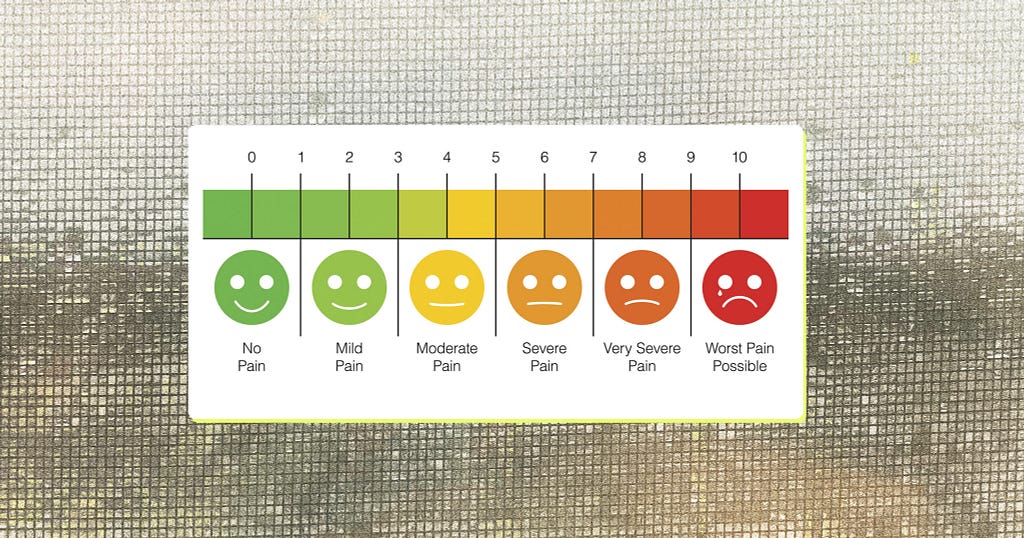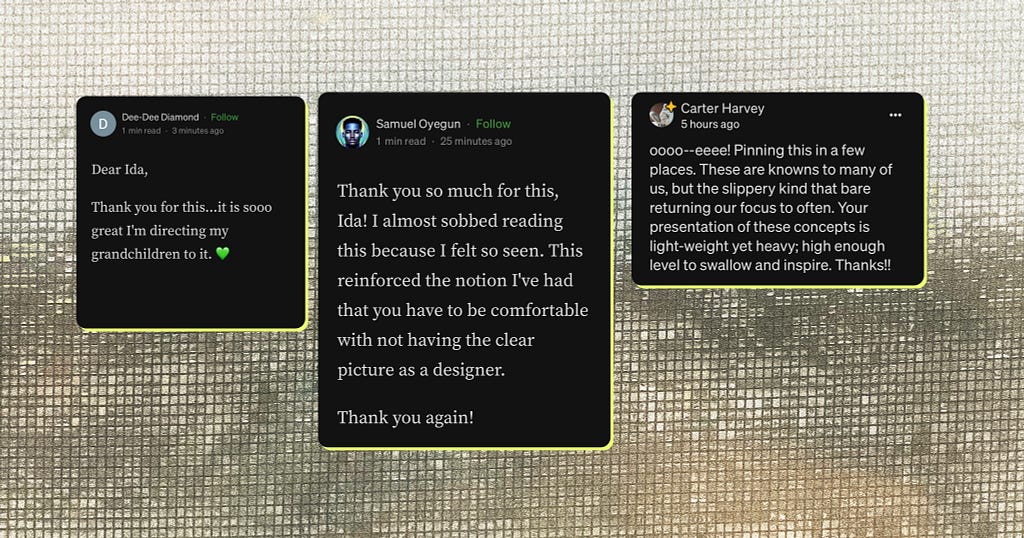Data is overshadowing emotion. Does it have to?

Early in my career, I read a book by Douglas Davis called Creative Strategy and the Business of Design. The book highlights how designers should explore the business side as much as the creative side in order to explain their work to stay relevant in the business. In the introduction of the book, Davis writes: “Remaining relevant as a creative professional takes more than creativity — you need to understand the language of business. The problem is that design school doesn’t teach the strategic language that is now essential to getting your job done.”
Ten years later, making the business case for design seems like it’s still a big need, as many CEOs don’t understand design and design leadership at all, and our industry keeps highlighting how designers need to understand business goals and KPIs. And while the lessons of strategic language and business knowledge have served me well as I’ve progressed in my career, lately I’ve started to observe how it seem like to move “up” as a designer, we must focused less on the the things we’re good at and enjoy, and more on transforming our emotional impact into a numbers game. We’re asked to prove our worth to people who value numbers in order to reach the next level or gain more work from our clients.
Sometimes, it feels like getting to the next level or being trusted means putting numbers on things that can’t and shouldn’t be measured — the emotional impact of design.
Rather than trying to reduce the emotional impact of design to simple numbers, are there things we can teach the “business world” about the value of the immeasurable when trying to create something truly innovative and memorable? Can we let go for our need for “numbers’’ and embrace other aspects of human behaviors and connection?
I don’t know the answers, but I do know where a lot of the challenges come from.
(I believe that persuasion and communication is about empathizing with your audience. Speak to them using language they understand. So… how might we convince someone who is motivated by hard proof and data that hard proof and data isn’t the only thing that matters?)
Your customer is human. Humans are motivated by emotions, not numbers.
If I were to guess, 100% of the people buying your products and using your services have feelings. Often, unexplainable feelings that are not based on reason. They can’t be measured with a 1–2–3 number or a % sign.
Human life is all about emotions. We’ve all experienced anger, sadness, love… really strong emotions. Sometimes, we’ve experienced these emotions for no apparent reason. We can’t explain the why, and we can’t measure “how much” we’re feeling a specific feeling. And when we’re asked to measure our feelings, often, the outcome isn’t beneficial for us OR for the person collecting the data.
One example is pain measurement scales that we sometimes encounter in the doctor’s office. They color-coded charts with happy, neutral, and sad faces. These tools are sometimes used by doctors to measure the pain a patient is experiencing.
These tools are meant to quantify our feelings — how intense is your pain on a scale from 1–10?
These tools were designed to help researchers study pain scientifically. They help quantify our feelings. But research shows that these measurements are problematic. Pain is subjective. The Pain Scale tool doesn’t capture all aspects of pain, and like the above article mentions “Asking patients to define their pain with a number could result in a plan of care that fails to address issues like breakthrough pain and pain-related sleep disturbances.”

Stories help us remember.
If you study memory, we learn that stories help us remember. When we hear stories, we form pictures in our head, and those pictures stick with us. Stories help us feel things. And the things that make us FEEL something are the things we’re cognitively engaging with. Stories help us imagine what someone is feeling (for example, in the doctor’s chair), and stories help the narrator process their emotions.
As a Communications Designer, I love stories. I love hearing people’s stories. I love listening. Stories are powerful. How powerful are they? Well.. I can’t tell you a number. And that is kind of the point. They are so powerful they can’t be measured with simple 1s and 2s.
What about Warm Data?
I recently discovered something called Warm Data. The International Bateson Institute explores the idea of Warm Data. The term Warm data, established by Nora Bateson, offers a complement to what can be learned through quantitative data (cold data). Bateson argues that we must look at the interconnectedness of complex systems in order to work with them. And that “Using only analysis of statistical data will offer conclusions that can point to actions that are out of sync with the complexity of the situation. Information without interrelationality is likely to lead us toward actions that are misinformed, thereby creating further destructive patterns.”
Batson speaks about the relationality of things and how we need to embrace both Cold Data and Warm Data in order to see the full picture.
Designers often hold a lot of the Warm Data context through the stories they hear from the users and the stories they use to connect dots and create new interconnected solutions. Stories are human. And brands, organizations, and companies, should aim to be radically human in order to create genuine connections.
Business should aim for true connection
Speaking of connection… Isn’t that what all businesses want from their users? True connections are bigger than “X numbers of clicks/numbers/engagements.” Most businesses know about the transactional nature of clicks and engagement in todays’ digital world, but I would love to highlight a personal example.
Last month, I wrote this article about navigating uncertainty. It got over 20,000 views on Medium. A lot of people read it, highlighted things, and clapped. It made me feel good because the topic is important to me and I’m glad it resonated with a lot of people. The reach mattered to me — BUT, what mattered even more than the numbers were the amount of messages and comments I got. In the comments and through new LinkedIn connections, people were sharing their stories with me. They were saying “I’m also struggling with this, and I’m so glad to know I’m not alone.” These kinds of connections are immeasurable. As a creator, I feel like my impact is 20,000 times bigger than the number of clicks. It makes me feel seen, and even though I’m the one publishing the post, it creates a way for me to learn from other people’s stories. It creates a two-way (or more) connection — something that I believe all creators, brands, and companies should focus on generating.

Having someone open up to you is a sign of trust. Hearing that someone wants to share your work with someone else is a sign of trust. Genuine connection and trust… Isn’t that what all companies, brands, and organizations look for as they try to create sustainable businesses?
Value is not just in the numbers
One of my least favorite parts about resumés is how the experts always tell you to “show the metrics.” Blogs and recruiters and AI best practices insist you include them, because it’s the “only way” to prove the true value you can bring to a business.
I understand the rationale. When you hire someone, you want to KNOW that they will deliver the things you’re looking for. But I still don’t like it. In my experience, saying a campaign I worked on got X number of impressions doesn’t feel like an accurate representation of how impactful or creative my work was. It doesn’t explain my ability to solve problem creativity or how well I worked with my teammates. How do you really measure collaborations?
Design is a process. But because of our obsession with hard profs, designers are only evaluated on their outputs — the thing that they made. How well someone moves through the process, or the care someone puts into understanding the problem is often lost when we measure success only with numbers.
I’m not saying that all design work is without numerical proof. If we invest in the proper research and testing, much of the impact of design is measurable with numbers. What I am saying is that creative work is not ALWAYS measurable and predictable. Much of it is based on experimentation, testing ideas, asking questions, and taking a leap of faith in order to create something that has not been done before.
If you only do the thing you know will work, the thing you can prove, you probably won’t build a product for the future. And if you don’t hire or promote designers beyond the “numbers” they bring, you’re probably not building a team where creative ideas will flourish.
Beyond numbers: Proving the value of design(ers) was originally published in UX Collective on Medium, where people are continuing the conversation by highlighting and responding to this story.


Leave a Reply